Travels through Andalucia
![]()
Algeciras and Gibraltar
Our first impression of Algeciras was grim. We found it to be an unlovely port and industrial centre across the bay from Gibraltar. From the estacion, we found our way to a hostal, checked in and left our stuff and walked out to explore. Going uphill to a mirador (overlook), there was a great view of the port and across the bay, Gibraltar loomed large across the bay (below). Plaza Alta, the main plaza, was elegantly decorated with tiles, but nearly deserted, a bit unusual for a Friday night. The surrounding streets were lined with shops, all closed. After stops at two cafes, we succeeded in finding a little food but ended up buying more at the supermercado to take back to the hostal.
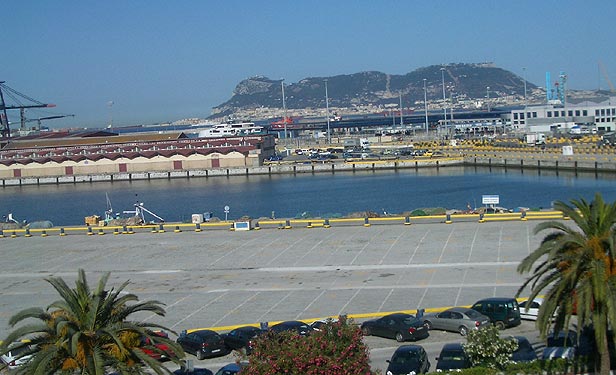
The next morning, returning to the bus estacion, we took a bus past homely apartment blocks, a refinery and a collection of big box stores to La Linea, arriving at the estacion just a short walk to the border with Gibraltar. From here we had our first stunning classic view of the Rock of Gibraltar, familiar from Prudential Insurance ads (below)! The geology of this place is incomprehensible - a solid rock face rising from the sea, a drift of clouds sailing over the summit!
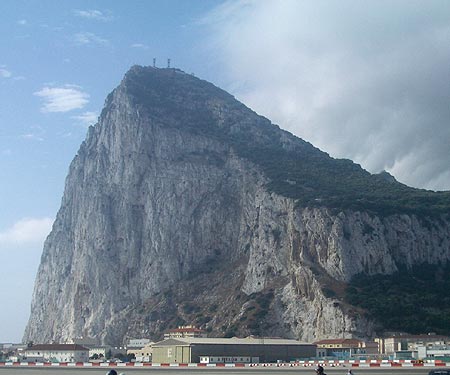
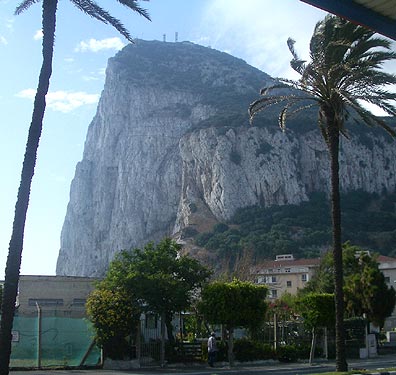
The border guard glanced at the outside of our passports and waved us through. Beyond the border monument (below left) and a cautionary gate, the airport runway crossed our path. We walked across, a novel experience (below right)!
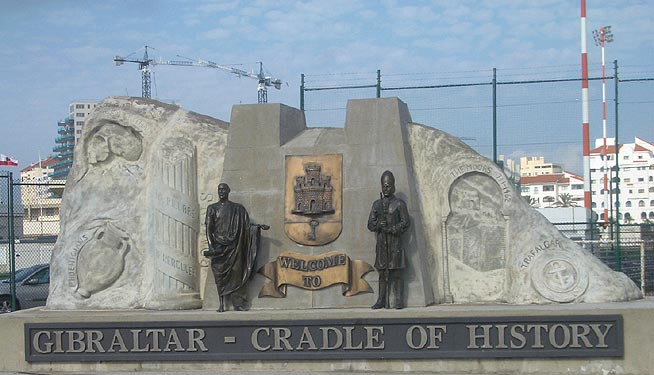
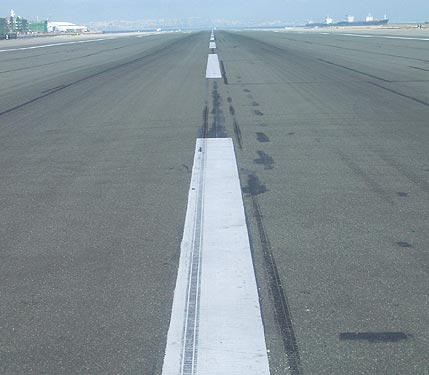
While most of you know of Gibralter from your school books or the Prudential ads, some background might be helpful. Back in 1702 the Spanish War of Succession began and after 11 years of fighting among the great powers of Europe, the Treaty of Utrecht, signed on July 13, 1713, awarded the Spanish town, castle, port, fortifications and forts of Gibraltar to the British Crown. Since then several attempts, all unsuccessful, have been made by Spain to recapture the Rock by force and negotiation. So, Gibraltar remains a British colony, but the 30,000 Gibraltarians are not actually very British; the number of British expatriates is very small. The other residents are Indian Hindus, Jews and Moroccan Muslims and Spaniards walk across the border each day to work. The Gibraltarians speak both Spanish and English and the resulting culture is much less 'British' than Blair recalls from his visit here in the 1970's.
Walking into the town, a woman with a very English accent lead us through Landport Tunnel to Casemate Square. We quickly became aware of way the town is snugged in along the base of the rock, facing the challenges of fitting buildings, roads and the harbor into this narrow space.
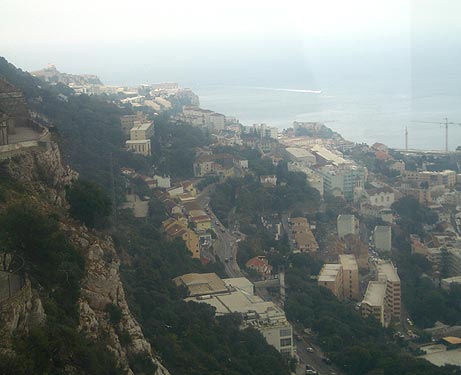
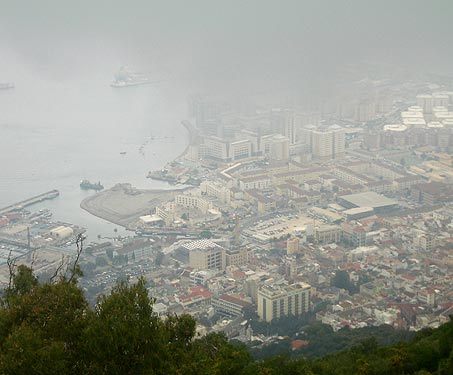
At the Visitor Centre we stopped for a map and inquired about the best way to visit the Top of the Rock and the Nature Reserve. We were told that the recommended way is to take a minivan or taxi tour for the 'all inclusive' Gibraltar experience. It soon became evident that the attractions of Gibraltar have been packaged, Disney-style, making it difficult to find out how to visit selected spots at your own pace. Continuing our walk along Main Street, we discovered that another big attraction is duty free shopping with throngs of shoppers filling the street.
The Gibraltar Museum, on the other hand, was deserted. We had the place to ourselves as we watched a video about the geological forces that formed the Rock and the human history, mostly of military campaign, sieges and fortifications. Next, there were galleries filled with photos, maps, models, uniforms and weapons, documents, stuffed and dried flora and fauna and rocks and minerals. In the lower level, was a Moorish bath house, well preserved.
After the museum visit, the weather had taken a turn for the worse. A cold wind was blowing and a mist had settled over the heights. We continued our walk, past Trafalgar Cemetery, to an English Pub. The menu was in English but when we ordered in English the Spanish waitress did not understand us, so we reverted to Espanol! The food was OK and very expensive. Gibraltarian currency is pounds, same value as British pounds, but different notes and coins. Euros are taken, at an exchange disadvantage, but change is given in pounds. On the street, we encountered the guerilla marketers of the minivan tours, very in-your-face and unpleasant. By now we had determined that we would ride the Cable Car to the Top of the Rock so we fought our way past the minivan guys to buy tickets.
The ride was spectacular - rising up over the town and over green forests to the rock face at the top offering views of the port where dozens of container ships and tankers waited, over the bay to Algeciras and out across the Mediteranean.
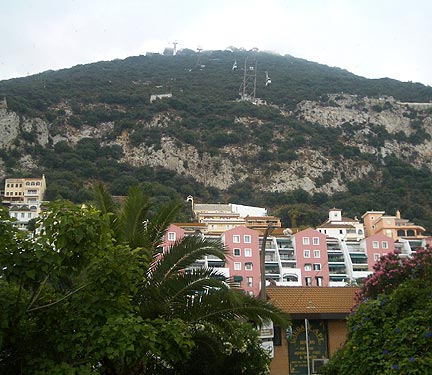
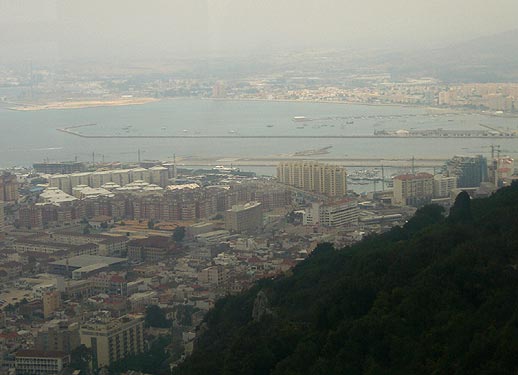
A series of terraces were perched at the summit, inhabited by resident tailess monkeys and tourists. The wind was intense and the mist had thickened to fog wafting around us, often obscuring the views, then clearing enough to make out the sheer rocky faces, the town and port, the ships. Fortunately, there was a shop and cafe with large windows so we took shelter to observe from inside.
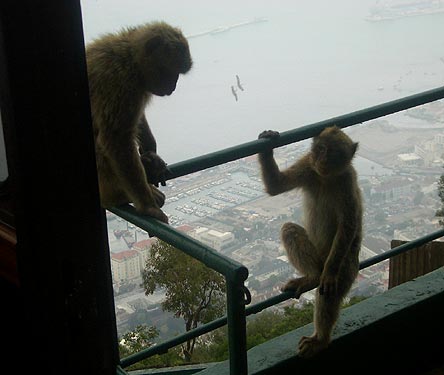
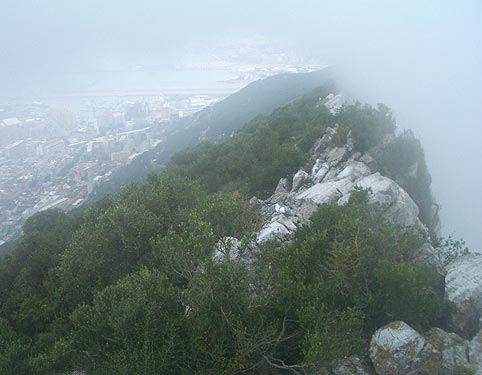
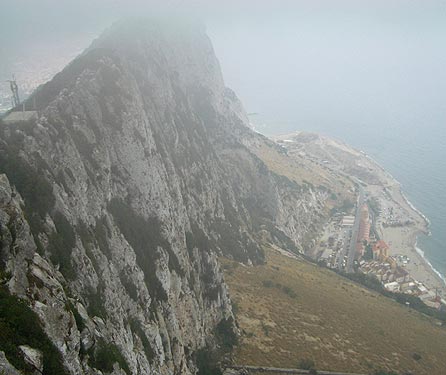
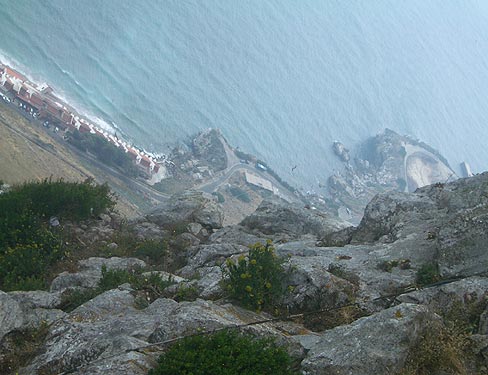
Gibraltar was making its own weather! The wind from the east, blowing across the Mediteranean, flows up against the rock barrier, rising, cooling and condensing its vapor, and finally flowing over the top, forming huge masses of fluffy clouds that cover the Top of the Rock. The woman in the cafe told us it was clear yesterday!
The Cable Car ride back down was just as spectacular. Back to Main Street, we caught a city bus to Point Europa, the southern tip of Gibraltar. On a clear day one can view Africa but not today! Still the expanse of blue water was impressive.
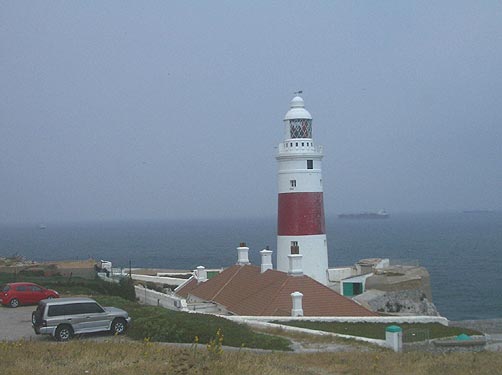
We rode back to the centre of town and walked back across the runway to Spain, where it was warmer and sunny, and caught the bus back to Algeciras.
Back at the Algeciras Renfe Estacion, we purchased tickets for the train trip to Granada the next morning.
Click here to return to Our Travels in Europe - Summer of 2007 page
![]()